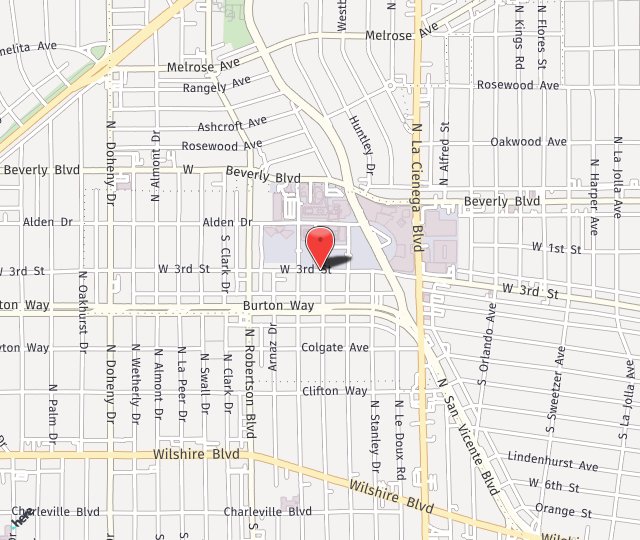Acute Flaccid Myelitis (AFM)
What is Acute Flaccid Myelitis?
Acute Flaccid Myelitis (AFM), also known as polio-like paralysis, is a devastating condition with sudden-onset weakness in one or more arms or legs. This serious illness has been on the rise with it peaking every 2 years. In 2014, the Centers for Disease Control confirmed 120 cases and in 2016 that number rose to 144. The state of California alone accounted for roughly half the number of cases between 2012 and 2015.
Watch Dr. Seruya discuss AFM on The TODAY Show
Symptoms of Acute Flaccid Myelitis (AFM)
Patients usually first report flu-like symptoms, such as fever, cough, cold, and runny nose. These symptoms are generally followed by severe muscle soreness in the arms and/or legs. Over the course of days, these muscle aches can transform into weakness and even paralysis of the arms or legs. Sometimes, even the muscles that control breathing or smile can become paralyzed. In the most severe cases, patients may require a ventilator to breathe.
What Causes Acute Flaccid Myelitis?
AFM can be caused by a common cold virus (Enterovirus, Adenovirus). The virus turns off one or more major nerves directly at their source in the spinal cord. This location of the injury is identical to the area of the spinal cord affected in Lou Gehrig’s disease (ALS). Presently, doctors and researchers have not been able to identify any specific environmental or patient-specific risk factors placing someone at higher risk for developing AFM after a common cold.
How Is Acute Flaccid Myelitis (AFM) Diagnosed?
AFM can generally be diagnosed by the history of a viral illness followed by signs of weakness of the arms, legs, face, and/or trunk. In situations where the diagnosis is unclear, a nerve conduction and muscle study can be ordered to obtain more information on the health of the individual nerves and their muscles. An MRI can also provide a picture as to whether the nerves are directly injured at their takeoff in the spinal cord.
Is Acute Flaccid Myelitis Treatable?
There are presently no medical therapies that can reverse the effects of the paralysis. Medications to fight the virus (antivirals) or decrease the inflammation around the nerves (steroid, plasmapheresis, intravenous immunoglobulins) have been tested with limited improvement noted thus far.
Occupational Therapy
Treatment of AFM begins and ends with occupational therapy. An occupational therapist scores the strength of each muscle group. The amount of motion at each joint is measured to identify areas that are tight. Patients then begin stretching exercises to keep the joints loose and work on strengthening. At each visit, the muscle scores and joint motion will be compared. Patients who are not making gains over several months are advised to undergo surgical treatment.
Surgical Treatment for AFM
Surgery is recommended when it is believed that the chances of achieving further recovery are better with nerve reconstruction than waiting for the nerve to heal on its own. Patients should understand that there isn’t an unlimited time that you can wait to fix the nerves. By 12-18 months, the nerve permanently loses its connection to the muscle. After then, even if the injured nerve is reconstructed, it won’t be able to tell the muscle to contract. Taking that into account, and the fact that a repaired nerve heals at 1 mm a day, the timing of surgery directly depends on the location of paralysis.
Hand Paralysis
Surgery is offered by 5 to 6 months to give the nerve enough time to reach its muscles before that special connection is irreversibly lost
Elbow Paralysis
Surgery is offered by 6 to 9 months.
Shoulder Paralysis
Surgery may be offered by 9 to 12 months.
Nerve decompression and nerve graft procedures are not an option in the treatment of AFM. Simply removing scar tissue from around the nerve (nerve decompression/neurolysis) or bridging the injured area with a sensory nerve (nerve graft) will not work as the damage takes place all the way back in the spinal cord. In AFM, nerve transfers are the only surgical option. In this procedure, a motor nerve from a healthy but less important muscle is transferred to an injured nerve that is more important to the shoulder, elbow, or hand.
What To Expect During Acute Flaccid Myelitis Surgery
Nerve transfer surgery is performed under general anesthesia and can last several hours.
What To Expect After Acute Flaccid Myelitis Surgery
After surgery, patients are typically wrapped in a shoulder and elbow sling to protect the nerve reconstruction against the motion. For most nerve transfer procedures, patients may only need an overnight hospital stay and are discharged home the following morning. If rib (intercostal) nerves are used as nerve transfers, patients may be admitted overnight in the Intensive Care Unit as a precaution to monitor their breathing and then stay for 3-4 days before being discharged to home. During the hospital stay, pain specialists place the patient on medications that specifically treat nerve pain. Three to four weeks after surgery, patients may take off their elbow and shoulder sling. At this point, full stretching is permitted except in patients with intercostal nerve transfers. Patients with rib (intercostal) nerve transfers must wait a total of 8 weeks before stretching the shoulder to avoid pulling the nerve connections apart. Patients will be followed closely by occupational therapists, who will use electrical stimulation to gently help the nerves turn back on. Each patient’s recovery is different.
Schedule a Consultation with Los Angeles Nerve Institute
If you are interested in learning about our Acute Flaccid Myelitis (AFM diagnosis and treatment options, fill out the contact form below or call us today at (310) 423-2129. Los Angeles Nerve Institute is proud to serve Los Angeles and the surrounding areas of California.


